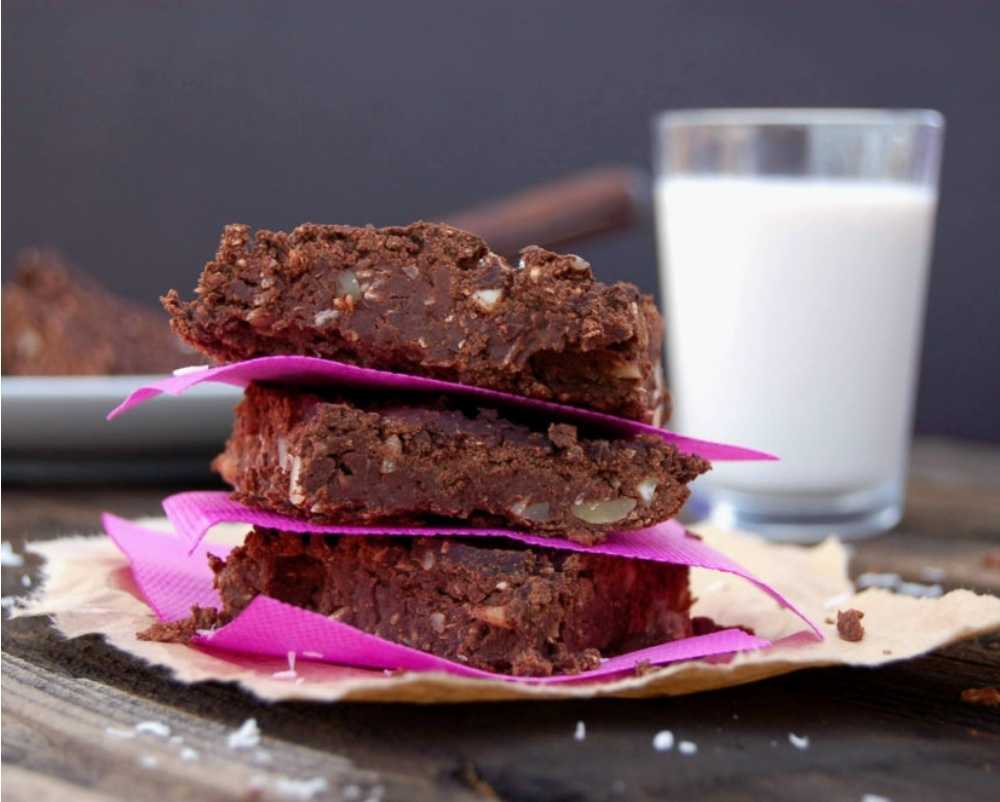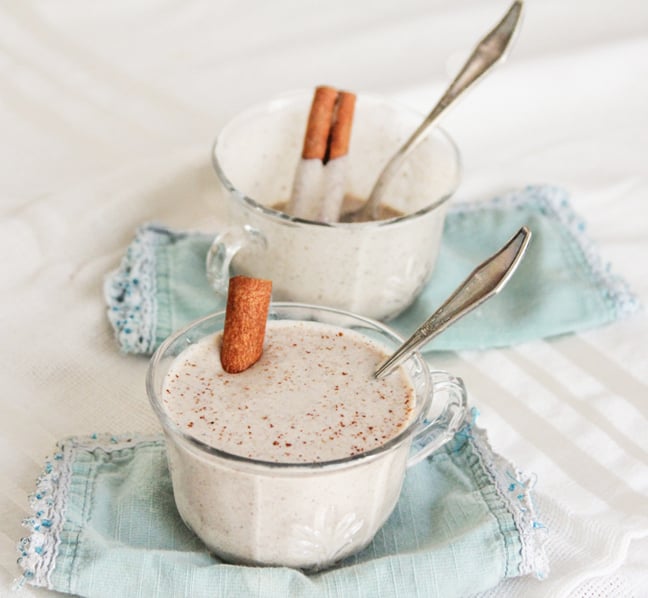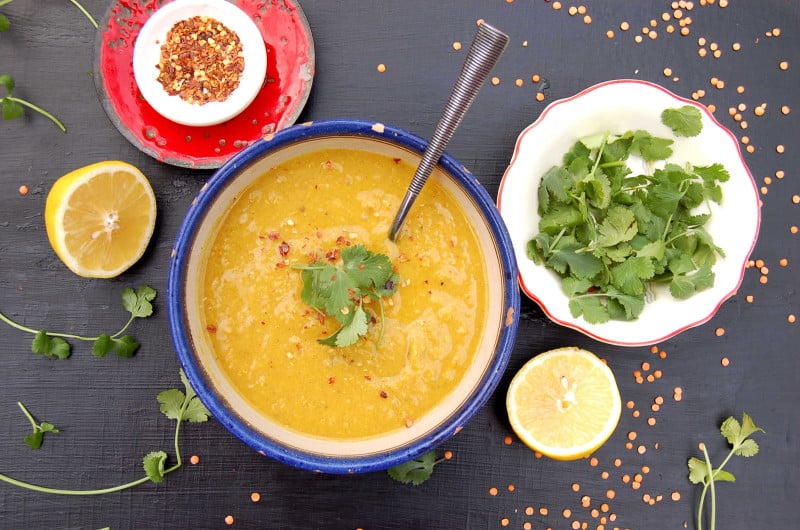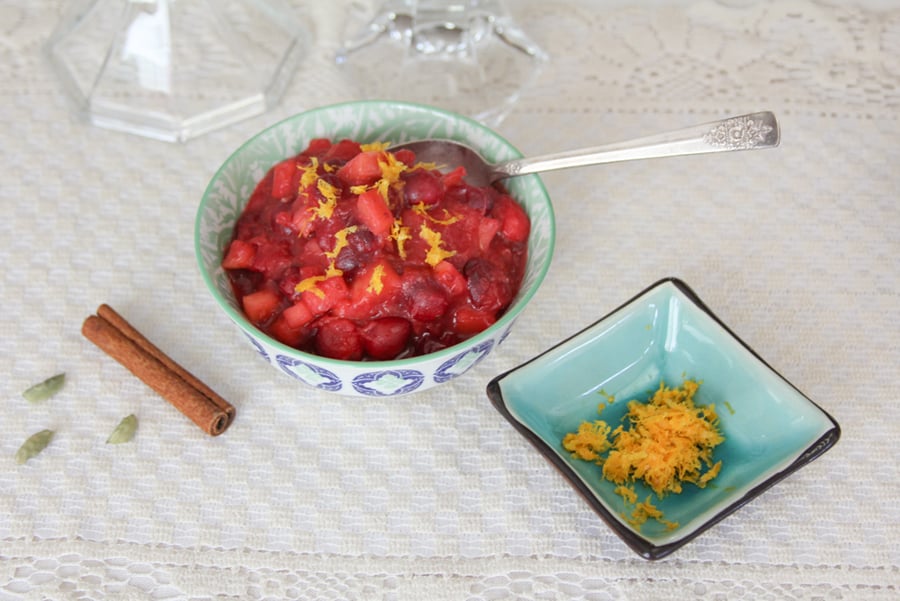A Simple Method to Quit Sugar
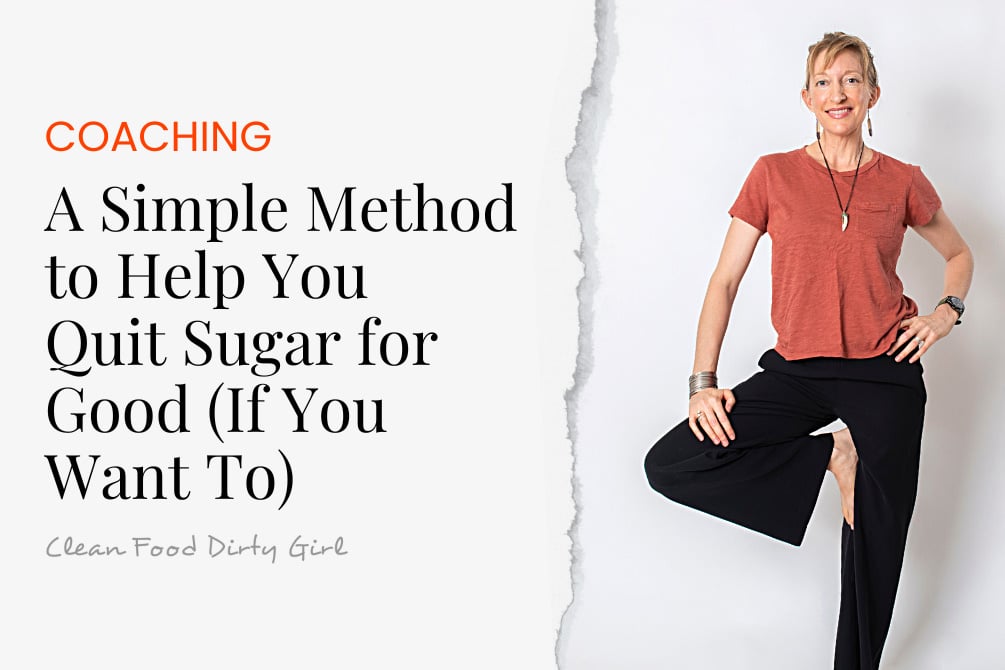
By Molly Patrick
Mar 3, 2023,
By Molly Patrick
Mar 3, 2023,
We all know processed sugar isn’t great for our bodies, but many struggle to go without it. This isn’t surprising, considering it’s addictive, expected in social gatherings, and widely available. Whether your sweet fix is ice cream, candy, or soda, refined sugar can be beeeeee-yatch to quit.
I’m not saying you should quit sugar because that choice is completely up to you. But if you want to break up with sugar, I have a simple method that will help you quit for good, even if you’ve tried in the past and made it exactly 1.3 days.
One Clean Food Dirty Girl member followed this method and has been sugar-free for over a year. I’m telling you, this works! I also discuss this method in my How to Quit Eating Sugar podcast episode.

How do you know if it’s time to stop eating processed sugar?
- You’re spending considerable time thinking about sugar: when you’ll have it next, what it will be, how it will feel in your mouth, and where you’ll find it.
- You’re in a spiral: you don’t eat sugar for a few days, then you have one cookie and all self-control is lost. This leads to three more cookies or possibly the entire package and then some.
- Giving up sugar feels like the natural next step in your journey toward a healthy lifestyle.
- You’re facing related health issues.
If any of these resonate with you, let’s dig deep.
1. Find your why
We all know the story. Eating something overly processed that we’re craving is enjoyable for a few minutes, and that’s where the pleasure ends, even if the binge doesn’t. There’s not a lot of return on that. Instead, consider spending your brain power on other things like relationships, creative outlets, cooking healthy food, moving your body, or learning new things. This is why I don’t eat a lot of processed sugar. I want my energy to be directed toward something that will expand and enrich my life. Now, find your why.
Ask yourself the following questions:
- Anytime we struggle with an addictive substance, it takes up a lot of space in our brains. If you cleared out that space, what would you be able to focus on?
- What is more pressing in your life besides sugar?
- How is sugar helping your life?
- Is it adding to the quality of your life, or taking from it?
We all have our reasons for deciding whether or not to eat sugar. We’re not always aware of our reasons, but they’re there. Whatever you’re doing, whatever choices you make, there is no wrong or right decision. Whatever you decide is the right choice for you.
We can make a choice, and we might like the choice we’re making, but do we like the reasons why we’re making that choice? Dig deeper, look at why you’re doing something, and make sure you like the reason.
Example:
- Choice: You decide not to have processed sugar anymore.
- Why: You want to be in control of your life and the food you eat. When you have sugar, it takes over and calls the shots, derailing healthy eating habits you value.
2. Use supportive language
One of the problems I see when we’re eliminating something from our life (sugar, alcohol, dairy, etc.) is the language we use. Phrases like “I shouldn’t be eating these cookies,” or “I can’t have any candy.” are usually more harmful than helpful.
How this might look
It’s day one of quitting sugar, and you’re craving ice cream. You tell yourself, “Nope, I can’t have that!”
That language usually sparks feelings of restriction, anxiety, resentment, or anger, which are not supportive of the action you want to take (not eating the ice cream). Humans don’t like being told no. We want what we can’t have.
Saying or thinking “I can’t” strengthens the desire for ice cream, making it even harder to avoid sugar!
I suggest switching your language from “I can’t” to “I choose.” For example:
- I can totally have cookies, but I’m choosing not to right now.
- I can eat this candy, but I’m focusing on my health goals and choosing not to eat it.
- I can eat whatever I want. I’m choosing not to because (insert your why here).
3. Practice delayed gratification: the key to quitting sugar
Now that you know your why and are using supportive language, let’s talk about delayed gratification.
Delayed gratification is when you want something, and you make the choice to have it later rather than now. Delayed gratification is the opposite of instant gratification. Often, delaying gratification means you’ll have a bigger payoff later. You see these terms thrown around a lot when talking about finances, but it’s helpful in this context as well.
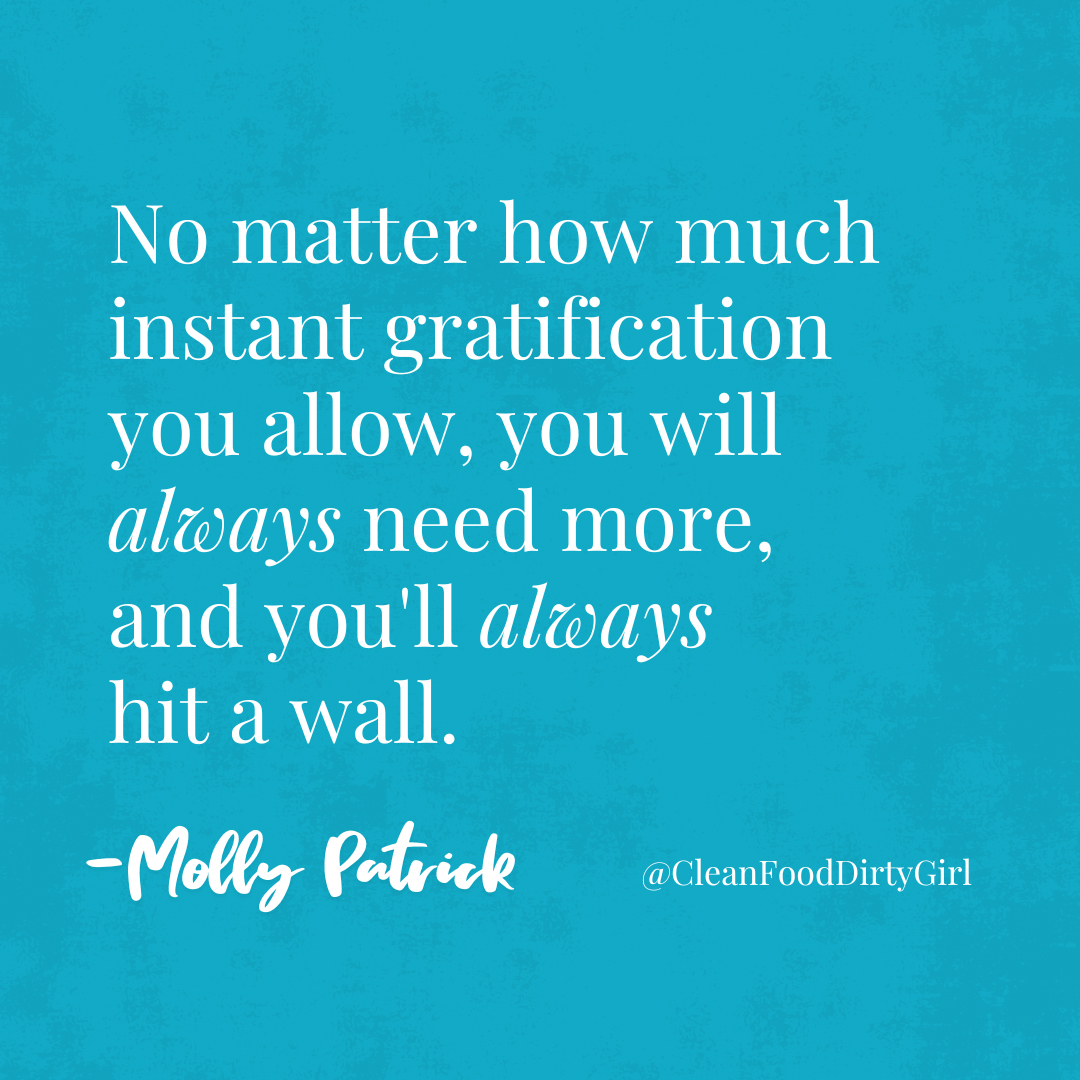
For our purposes, instant gratification is when we immediately act on cravings or desires. It gives us a small rush of dopamine (the reward hormone) and feels really good in the moment. But no matter how much instant gratification you allow, you will always need more, and you’ll always hit a wall. Sugar was never my addictive substance of choice, but I struggled with alcohol for a long time, so instant gratification and I go wayyyyy back.
How to practice delayed gratification
Let’s assume you’re quitting sugar tomorrow.
- When you have a sugar craving, plan to have the thing you’re craving 24 hours from that moment. For example, you’re craving cookies at noon. Tell yourself, “Instead of having cookies now, I’m choosing to have exactly three cookies at noon tomorrow.”
- Write down when, what, and how much you plan to have and put it on your calendar.
- The next day, when your cookie time comes, eat them with intention and really enjoy them. If you don’t feel like having them when you planned, skip them. When you have another sugar craving, repeat this process.
Following these steps will help you get the craving out of your mind without white-knuckling through it. Your brain thinks, “Okay, I can have the cookies later. I can relax now.”
How we feel when delaying gratification
Since you’re not acting on the cookie craving right now, take time to truly feel what’s coming up.
Are you feeling agitated? Anxious? Angry? Sad? Disappointed?
Close your eyes and notice where you feel the emotions in your body. What’s the sensation like?
Maybe it’s in your chest. Focus there and tell yourself, “This is what agitation (or whichever emotion it is) feels like in my body.”
Allow it to be there and connect with it. Being annoyed, anxious, sad, angry, etc., will not hurt you.
Can you open up to it and hold space for it? Open your heart and just breathe into it.
Eat with intention and focus
If you do want to eat the sweets when you planned to, you absolutely can. The only requirement is to eat them with intention and focus. Turn off the TV and put down your phone. Don’t talk to anyone. Be completely present and savor every bite. Notice the sound and feeling in your mouth. Notice the taste and texture. Take your time and be mindful of the experience.
Afterward, ask yourself:
- Were the cookies as good as I thought they would be?
- By not acting on the craving immediately, did I experience the cookies any differently?
- How did my awareness change the experience compared to mindlessly giving in to cravings and allowing instant gratification?
Instant gratification is reactive. When you go for the box of cookies and start noshing them by the handful, you’re likely not paying attention to the taste or texture. Next thing you know, you reach for another but they’re gone. This isn’t bad, it’s what so many humans do, but it can undermine our goals.
Delayed gratification is intentional. Eating according to plan allows the process to be purposeful and mindful. You’re processing the feelings that came with your craving and then eating the cookies without distractions and allowing yourself to really enjoy them.

Practicing delayed gratification is empowering and allows you to make the choices you want instead of feeling like you have to rely on willpower alone. White-knuckling through shit does not work for long. The more you practice, the more awareness you’ll have about your sugar intake, and the fewer sugar cravings you’ll have.
What if you indulge in your sugar craving immediately?
Congratulations, you’re definitely a human! It’s perfectly okay, and nothing has gone wrong. Tomorrow is a new day to practice. Eventually, the cravings will weaken, and you’ll get better at processing the emotions behind the desires. Just keep practicing with loads of self-compassion.
The simple method to quitting sugar
- Find your why
- Use supportive language
- Practice delayed gratification
Put this simple method to work and quit sugar for good. I would love to hear about your process. Leave a comment below, tag me in our Facebook group, or send me an email.
Plant based desserts free of refined sugar
Quitting refined sugar doesn’t mean life won’t be sweet! Our recipes are whole-food plant-based and free of overly refined sugars. We use dates, maple syrup, and coconut sugar in our recipes. Check out some of member favorites below and join Clean Food Dirty Girl for more resources to help you reduce or quit sugar and thousands of tasty recipes to nourish your beautiful body.



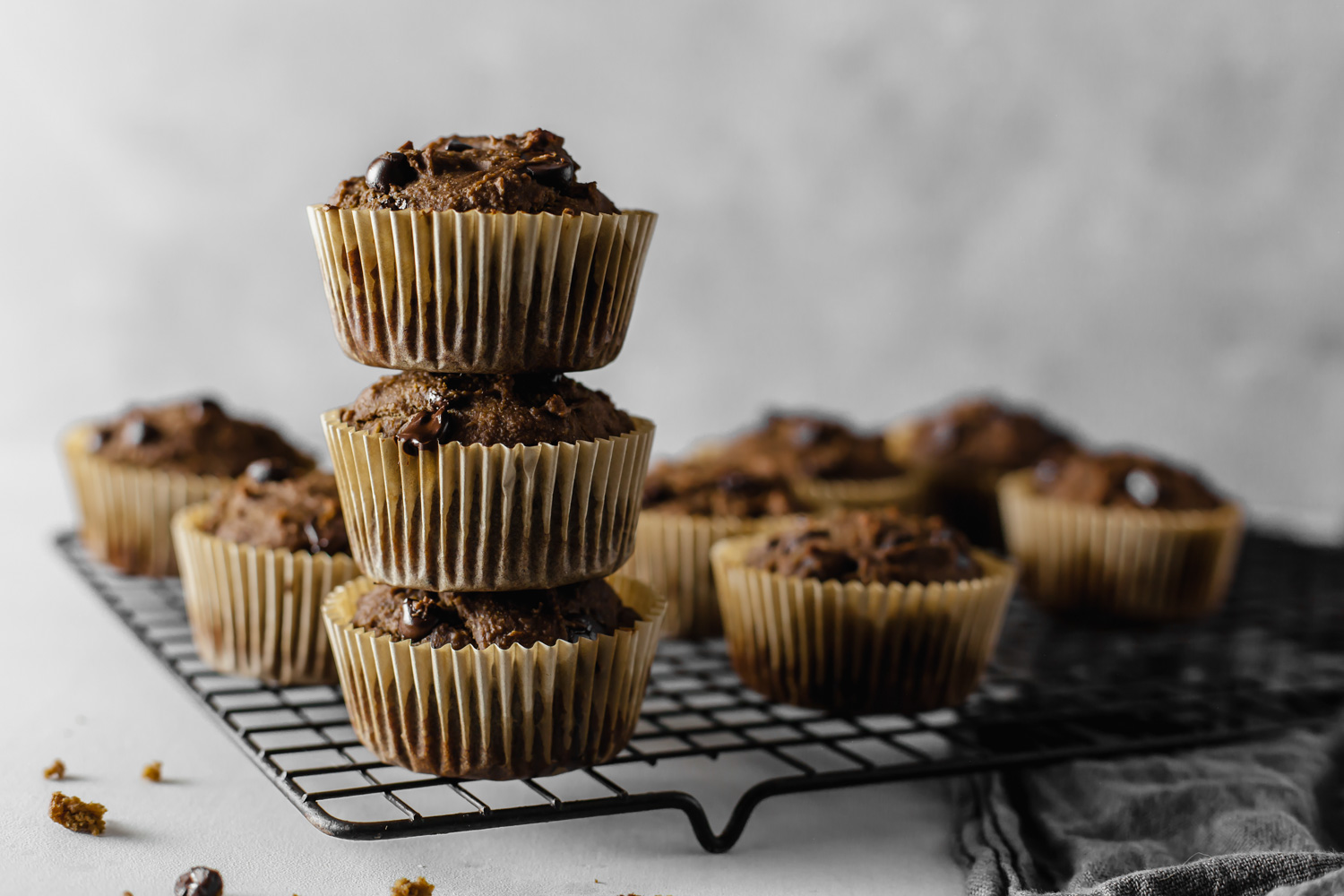
Helping you human
I’ve helped coach many people on quitting sugar and other habits that are no longer serving them. If you’re looking for support, read my Love Letters to help you take the next step.
- We repeat what we don’t repair
- Motivation is 💩
- Beating yourself up isn’t helping
- A whole new way to look at your body
- Recalibrating the life dial
Sign up for love like this delivered straight to your inbox every Saturday.
You may also enjoy...
Love the food that loves you back
Get instant access to thousands of plant-based recipes and meal plans, no credit card or perfection required.

